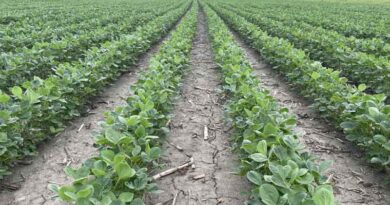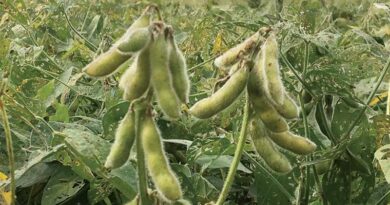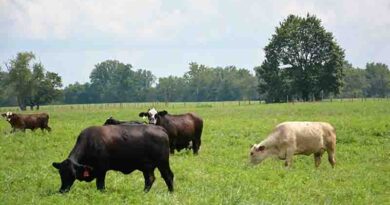Follow These 3 Steps to Simplify Your Herbicide Selection Process
31 January 2023, US: Every field needs the right crop plan to maximize efficiency and profitability. While there are many elements that make up a complete and successful crop plan, the weed control portion of your plan should be one of your top priorities in order to finalize an effective weed control strategy before the start of the season.
1. Assess Your Weeds
Identify weed species within each field
Focus on the weeds that created problems for you last season, and determine the crop to be grown this year. Many herbicides can be used with several different crops, but some herbicides are crop specific.
Consider last year’s weed populations
Next, estimate the seed bank to be produced this season based on last season’s figures. For example, just one Palmer amaranth plant can produce 500,000 seeds. Even if you were to get 99.9% control, there could still be 500 Palmer Amaranth plants per acre remaining.
Determine if your weeds are annual, biennial, or perennial
Which weeds were a factor in your final yields last year? Knowing the weed’s life cycle helps you in herbicide selection and application timing.
Assess if your weeds are resistant to certain modes of action
For example, if the weed you are trying to control is resistant to acetolactate synthase (ALS) inhibiting herbicides, use another mode of action to get acceptable control.
It’s possible that ALS herbicides may still be the best choice to give you good control of the other weed species found in the same field, so you might think about whether tank mixing herbicides could work for you to get more weed control. Make sure you’re also being mindful of the compatibility of the herbicides planned for tank mixing.
[READ: 7 Ways U.S. Farmers Can Delay Herbicide Weed Resistance]
2. Consider Your Herbicide Options
Remember crop safety
Understanding variety characteristics and their herbicide interactions will help you to determine the best herbicide choice for your particular crop(s). This is an important step, so make sure it’s one of your top priorities in the herbicide selection process.
Revisit last year’s herbicide rates
Did you receive a level of weed control that you were satisfied with this year? If your herbicide plan includes more of the same herbicides you used this year, purchasing them now at lower prices could help you save money and eliminate the possibility of searching for them in the spring.
Consider overlapping residual herbicides for troublesome weeds with extended germination
Consider making an application of overlapping residual herbicides for those troublesome weeds that have extended germination periods. This can be a reliable way to achieve good control on difficult, prolific weed species — the goal is to keep the field weed-free until crop canopy.
Think about alternative products and methods upfront
Some alternative products may help to control your weeds more efficiently. Combining mode of action herbicides can also help to improve your weed control results — this is simply good weed management. Ask yourself if tillage could be implemented to improve weed control.
Read labels for “control” versus “suppression” of weeds
Always read the herbicide label to be sure it says “control” of the weed. Select a herbicide that states it can help to control the specific weeds you have present.
If the label claims “suppression” of the weed, then you must expect some weed escapes that may be difficult to deal with. Selecting the least expensive herbicide may not be the most cost effective in the long run.
Consider any chemical carry over issues
Consider any chemical carry over issues that might be possible from past herbicides you have applied, as well as from the herbicides you’ve selected for next year. Be sure you know the Pre Harvest Interval (PHI) for each of the products you’ve chosen, and make certain that these products fit into your future cropping plan.
[Explore herbicides, adjuvants and other crop protection products from FBN Direct®]
3. Apply Your Herbicides
Time your application for the best control of each weed species
Winter annual weeds should be treated in the fall unless tillage to remove them is planned for early spring. Less expensive growth regulators can often be applied for broadleaf control in the fall with reduced risk of off target damage. Keep in mind that application timing can also affect the price of the herbicide program, depending on when you plan to buy your chosen chem.
Always apply based on the label recommendations for each product
Always read and follow the label use directions before using any ag chemical. The bottom line is that the label is the law.
Use full rates to help reduce weed escapes
By applying reduced rates of herbicide, you may be contributing to building up weed resistance to that herbicide. You should expect reduced weed control if you apply a reduced rate of herbicide. This can necessitate additional weed treatment application later in the season (which would increase your herbicide cost) and give you less effective weed control than you’re looking for.
[WATCH: Post-Emergence Herbicide Applications Webinar with FBN Senior Staff Agronomist Doyle Oerter]
Start Developing Your Herbicide Strategy
By following these steps, your herbicide plan can help you achieve maximum weed control even from the most difficult weeds. Once you’re ready to start purchasing the crop protection products you need to support your crop plan, here are a few next steps:
- Brush up on the differences between branded and generic crop protection products.
- Review the FBN® Crop Protection Guide to see FBN’s broad portfolio of high value, quality crop protection products.
- View all available herbicides and other key ag chem products from FBN Direct.
Also Read: Millets & Organics -2023: Three-day International Trade Fair starts at Thripuravasini, Bengaluru
(For Latest Agriculture News & Updates, follow Krishak Jagat on Google News)















